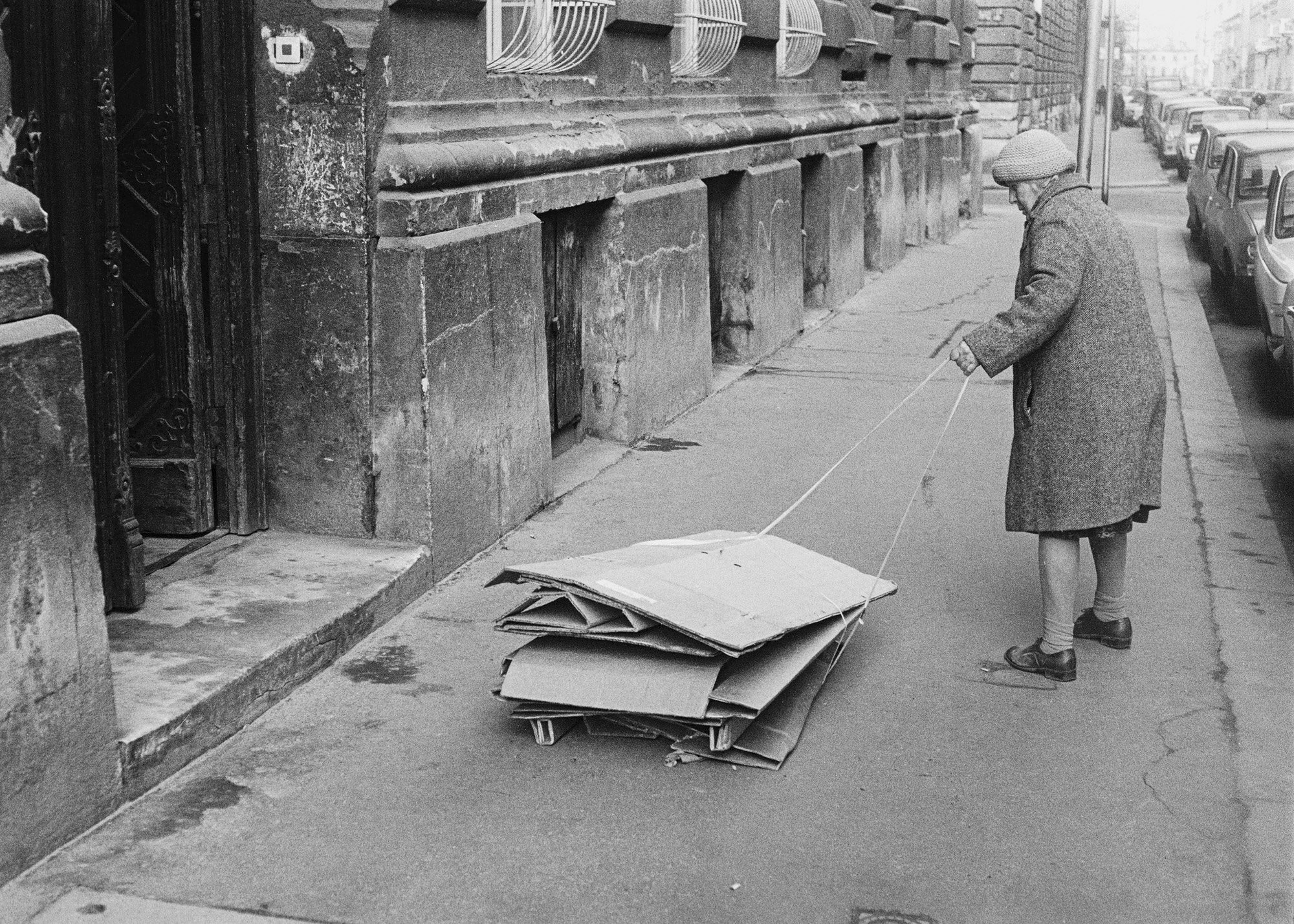Minor Mysteries
In 1981 nearly half a million people demonstrated in Amsterdam against the nuclear arms race after the Dutch government’s agreement to base NATO cruise missiles on their territory. The countries behind the iron curtain (all of them communist one-party states) were our supposed enemies. At the same time an increasing number of people in Western-Europe became curious about what life was like for ordinary people in Eastern Europe. Unlike the population in the Eastern-bloc we could travel freely and apply for a visa at one of the embassies for a visit.
In 1976, I was 21, and had completed a three-year study program in Technical Photography. Subsequently I had several different jobs; in a garage; a biscuit factory; selling cameras in a photo shop and I was also doing some basic product photography. Meanwhile, I was producing my own ‘free work’.
Like many other young photographers at that time, I was inspired by legendary names renowned for their human approach. In particular the poetry of Andre Kertesz, the humorous style of Robert Doisneau and the surrealism and sensitivity of Henri Cartier-Bresson.
A few months before I was born, in January 1955, Time Life published Cartier-Bresson’s famous photo-essay People of Russia. He was the first western photojournalist to be permitted to photograph ordinary people in the Soviet Union.
In September 1982 I visited Hungary for the first time, but only for a few days because of a heat wave. Nevertheless, the few pictures I took did not let go of me. Somehow, they told me that it was time to find out what I really wanted to do - in photography and in my life. I left my jobs and applied to study at the Rijksakademie, where I was admitted in August 1983 to experiment and deepen my visual language.
In October that year there was a second, even larger, demonstration against the crazy nuclear rat race, in Den Haag. A few months later I phoned the Ministry of Culture to ask for advice: ‘What do I need to do if I wanted to work as a photographer in Hungary?’ It turned out there was a cultural exchange program and that a short visit would be possible, courtesy of the Hungarian Ministry of Culture.
Arriving at the end of May 1984, I was made very welcome and have warm memories of these two weeks. A cultural program was organized for me as well as meetings with young local photographers. There were no obstacles for a longer stay. In September I returned to Budapest, rented a flat in the Bartok Bela Street, took my Leica M3 and 50mm Summicron lens and started, somewhat randomly, walking the streets.
At first my photographs were a study of body language in all kinds of, often puzzling, situations: people bending over (Shoelaces? Dropped keys?); crawling out of holes; hanging on window bars; turning figures alongside bent lampposts, awkwardly pushing an old washing machine along a pavement and so on. I was constantly on the move. Reacting quickly, sometimes without even looking through the viewfinder these situations, isolated into images became even more enigmatic. Enlarging the riddle seemed a way to create space for the imagination. I was always attracted by photography’s capability to mystify. Searching for an undramatic style, I developed my films to register all of the grey tones and printed correspondingly in the darkroom.
Forty years after Stalin, Churchill and Roosevelt divided Europe, like elsewhere in the Eastern Bloc, the people in Hungary were dealing with a situation they had not asked for. The course of history for people in the eastern part of Europe is often experienced as fate, more so than in the west. I was moved by the everyday reality of people’s lives. It was sad to see elderly people collecting cartons for a few forints, abandoned by their government on a tiny pension. Those images didn’t seem accidental. They raised an underlying question: in what way did these minor mysteries refer to a bigger picture?
Although I occasionally visited smaller towns outside of the city, I spent most of my time in the capital and explored many of its districts. Hilly Buda is connected to flat Pest by some striking monumental bridges over the river Danube. On the Pest side I often found the right amount of people (not too many - that didn’t work for me), just enough life to explore.
Apart from taking photographs I made friends, learned to understand the country better and stayed with interruptions for almost a year. In June 1986, during the final phase of Communism the reformist Soviet leader Mikael Gorbachev visited Hungary and during that same month I took my last photographs.
A first exhibition of this work, entitled ‘Street Photographs’ took place in Budapest 3 months later, part of a cultural festival about the Netherlands in Hungary. It was subsequently published as the book QUIRK OF FATE in 1987 and the series won a prize that year in the Daily Life category of World Press Photo.
‘The embodiment of the undirected scrambling’, was a headline above a review in the Dutch weekly Vrij Nederland in 1987 when QUIRK OF FATE appeared. This new edit from the archive gives a wider impression in relation to how I was playing with the ability of photography to talk about life, far away from news events.






















